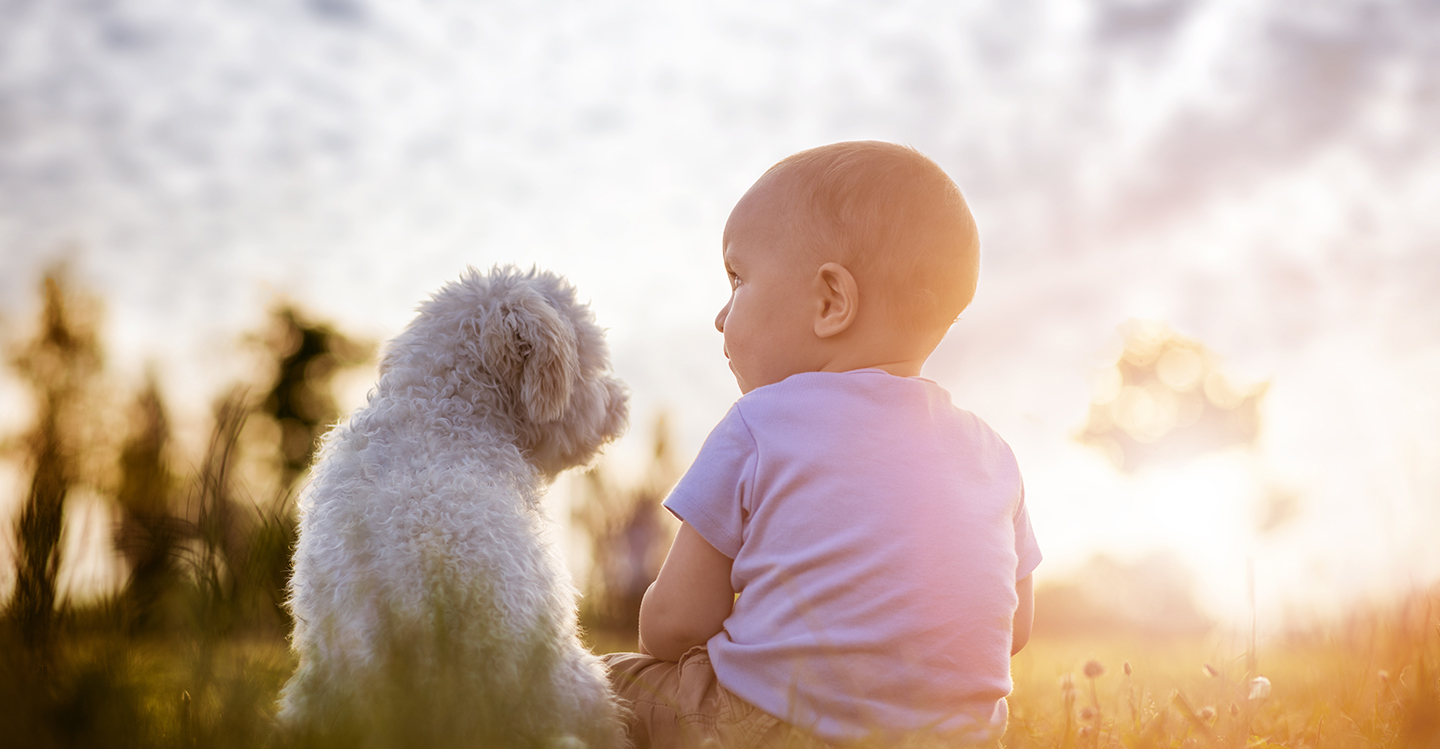How do cats and dogs react to newborns?
All pets react differently. Even the happiest dog or cat can be unpredictable given the right mix of circumstances. Always introduce newborns slowly to pets, and likewise new pets gradually to older, more active babies.
When introducing a baby to the home, cats will generally be curious before going off on their merry way, only returning later for the warmth provided by a sleeping baby. Don’t let them use your baby as a cushion!
Dogs will likewise be curious, but they are more likely to want to engage with a baby. Dogs, too, are more likely to be affected emotionally by the new competition for attention, so be aware of this for both their sakes. Most dogs, however, are just happy there’s a new human to play with.
What should I be wary of?
Newborns are unlikely to get themselves into trouble – particularly because they are rarely independently active or out of your sight. As a general rule, don’t let dogs or cats lick or come into sustained, close contact until your baby is a bit older and their immune systems are more mature.
On the other hand, crawling and walking babies and toddlers are at risk of poking, prodding and pulling the fur and tails of dogs and cats. This is why, possibly even more than a newborn, these older children should be supervised around your pets.
Training your pets…
When introducing a baby to the house, make sure that you help your pet feel at ease through verbal praise and treats. It can even be a good idea to first introduce your dog to a used swaddling blanket with your newborn’s scent.Cat owners know that cats tend to deal with things in their own time. If your cat has an unlikely negative reaction, the best you can do is offer plenty of affection to them in the presence of the baby so as to normalise the situation.
And if you are ever in doubt, ensure that when they share the same space baby and pets are kept separated or supervised. Remember that a well-trained dog or socialised cat is less likely to react badly when surprised, provoked or hurt. Don’t put either your pets or your baby in a situation that might lead to a tough decision.
...and your kids!
Although pets get all the attention when something goes wrong, the door swings both ways.
While it is unlikely that a baby who has lived with pets since birth would want to push the boundaries, a pet introduced to an older baby or toddler is a novel source of entertainment. Go to the effort to show your child how to treat your pets with compassion and respect. Explain to them what is acceptable, and just exactly which and why other behaviour is not. Teaching them how to behave will be an ongoing process, so be firm and patient.



